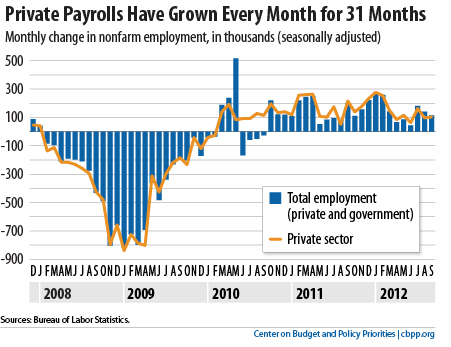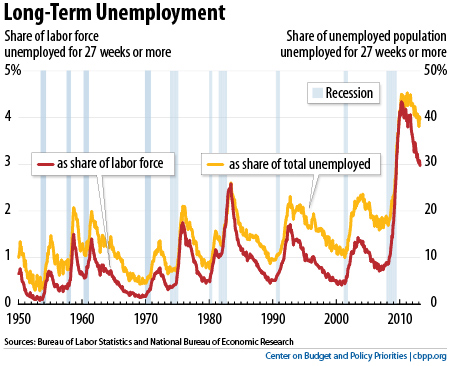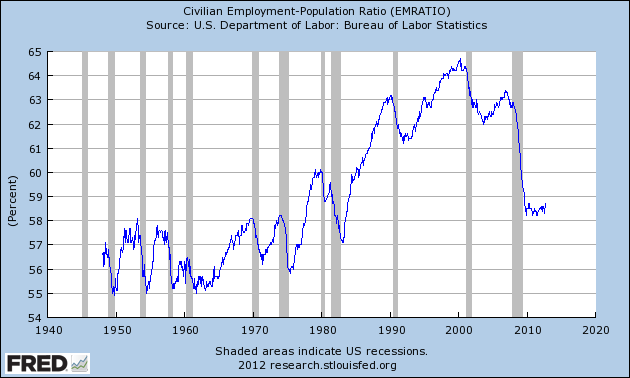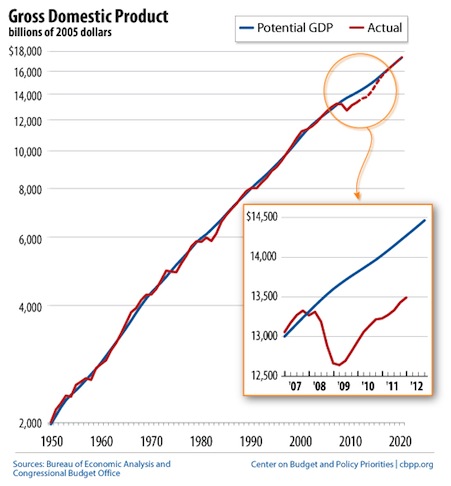JULY
2013 UNEMPLOYMENT DATA*
(U.S.
BUREAU OF LABOR STATISTICS)
OFFICIAL
UNEMPLOYMENT: 7.4%
A year earlier, the number of unemployed
persons was12.7
million, and the jobless rate was 8.2 percent. [BLS]
| White |
6.6% |
| African
American |
12.6% |
| Hispanic |
9.4% |
| Asian** |
5.7% |
| Persons with a disability** |
14.7% |
| Men
20 years and over |
7.0% |
| Women
20 years and over |
6.5% |
| Teens
(16-19 years) |
23.7% |
| Black
teens |
41.6% |
| Officially
unemployed |
11.5
million |
HIDDEN UNEMPLOYMENT
| Working
part-time because can't find a full-time job: |
8.2
million |
| People
who want jobs but are
not looking so are
not counted in official statistics (of which about 2.4 million**
searched for work during the prior 12 months and were available
for work during the reference week.) |
6.6
million |
|
Total: 26.3 million (16.2% of the labor force)
|
Source: http://www.bls.gov/news.release/pdf/empsit.pdf See also Current
Employment Statistics--Highlights
**Not
seasonally adjusted.
*See Uncommon Sense #4 for an explanation of the unemployment measures.
In addition,
millions more were working full-time, year-round, yet earned less
than the official poverty level for a family of four. In 2011,
the latest year available, that number was 17.9 million, 17.6
percent of full-time, full-year workers (estimated from Current
Population Survey, Bur. of the Census, 9/2012).
In
May 2013, the latest month available, the number of job openings
was 3.8 million, "little changed from April. The number of job openings was little changed over the month in most industries but rose in retail trade and fell in professional and business services. The number of job openings rose in the Midwest but was essentially unchanged in the other three regions." Job
Openings and Labor Turnover Estimates, July 9, 2013.+
Thus there are now nearly 7 job-wanters for each available job.
Private Payroll
Employment Has Grown For 41 Months cbpp 8/13
Long-Term Unemployment Remains High

Employment-population
ratio 1/1948 to 7/2013

GDP Fell Far Below What the Economy Was Capable of Producing

+"The
number of job openings in May (not seasonally adjusted) was little changed over the year for total nonfarm, total private, and government. Several industries experienced an increase in job openings over the year, including retail trade; transportation, warehousing, and utilities; and finance and insurance. Industries experiencing a decrease in openings over the year were durable goods manufacturing and professional and business services. In the Midwest region, the number of job openings rose over the year."
|

